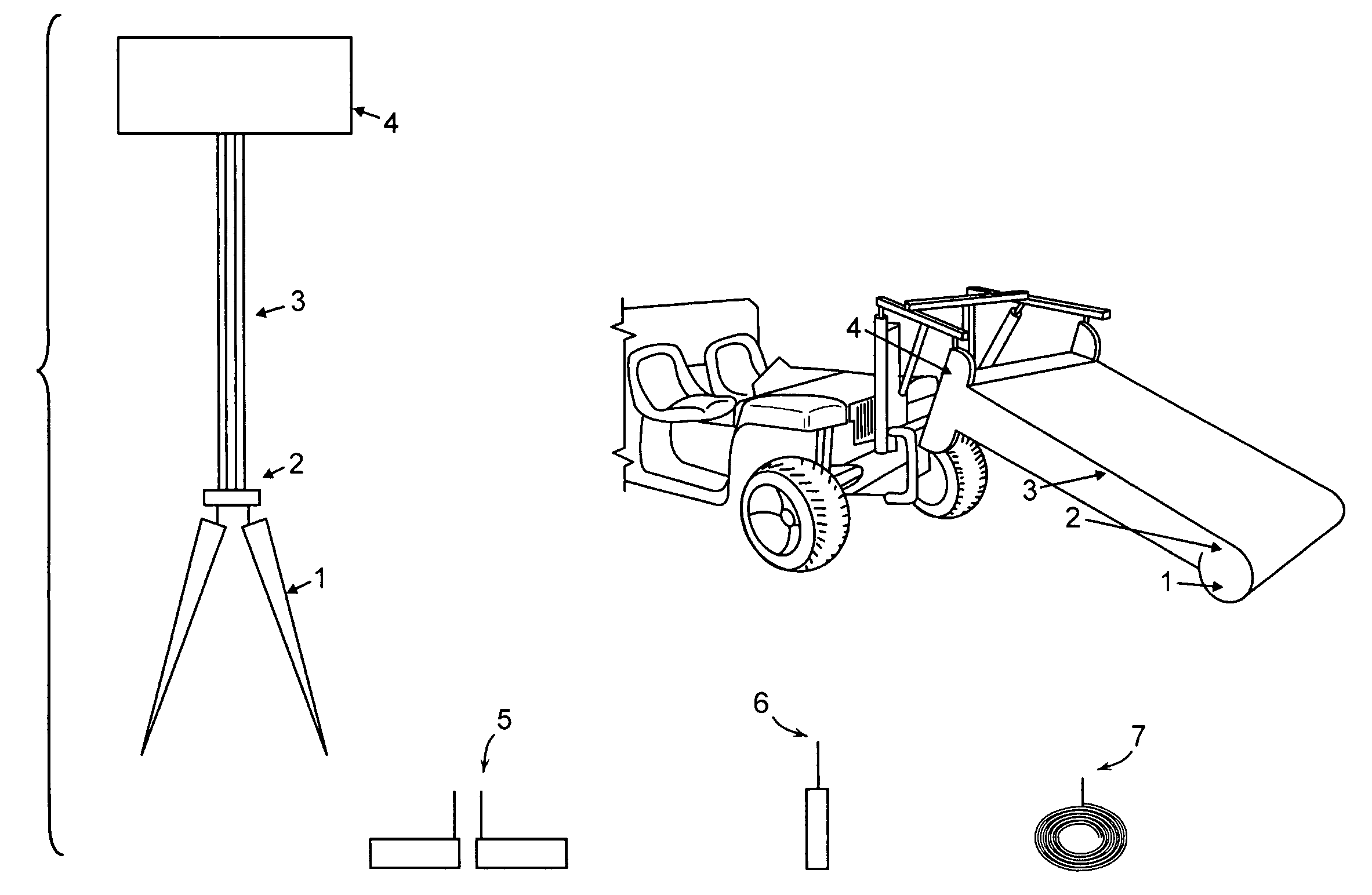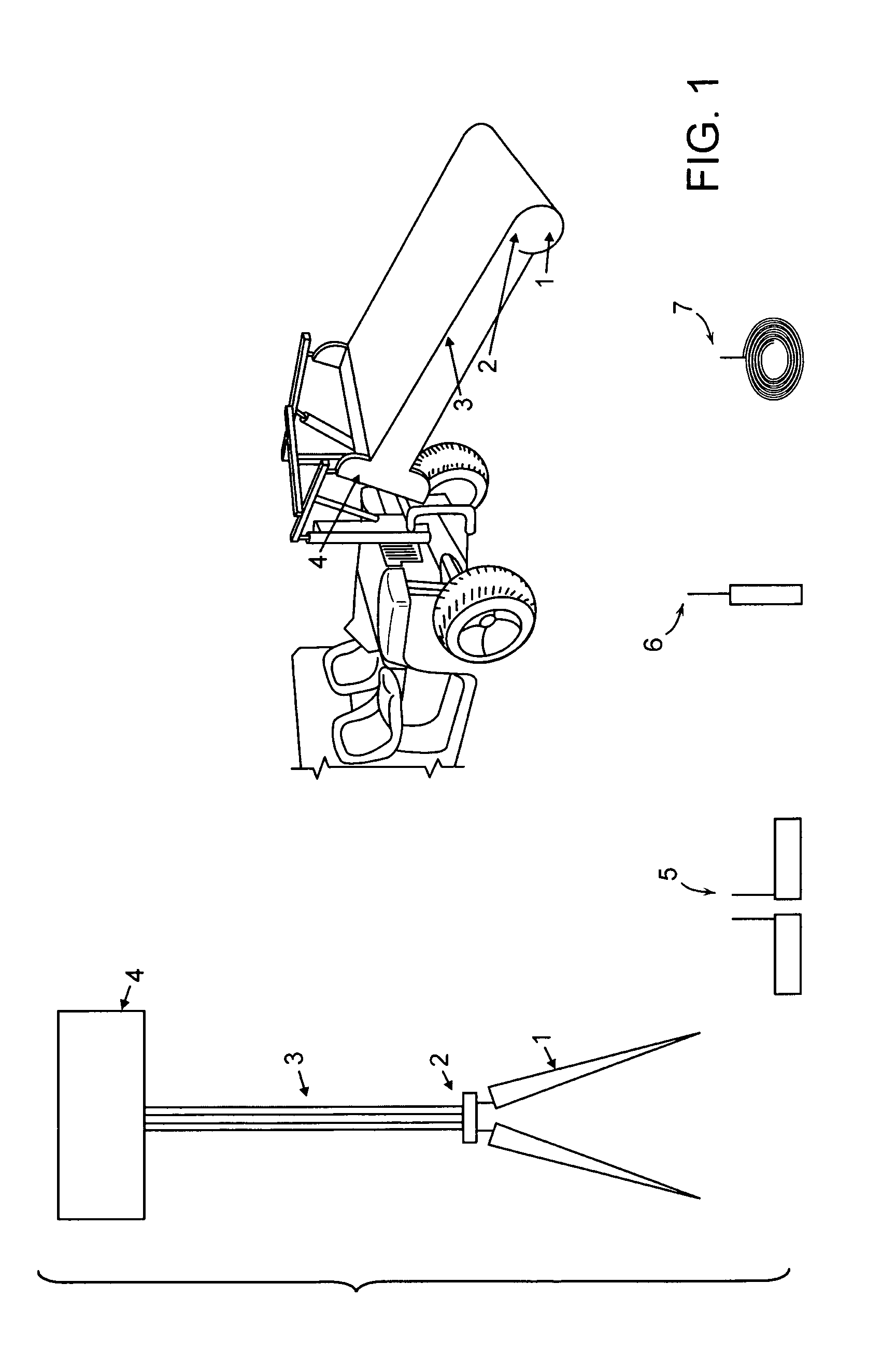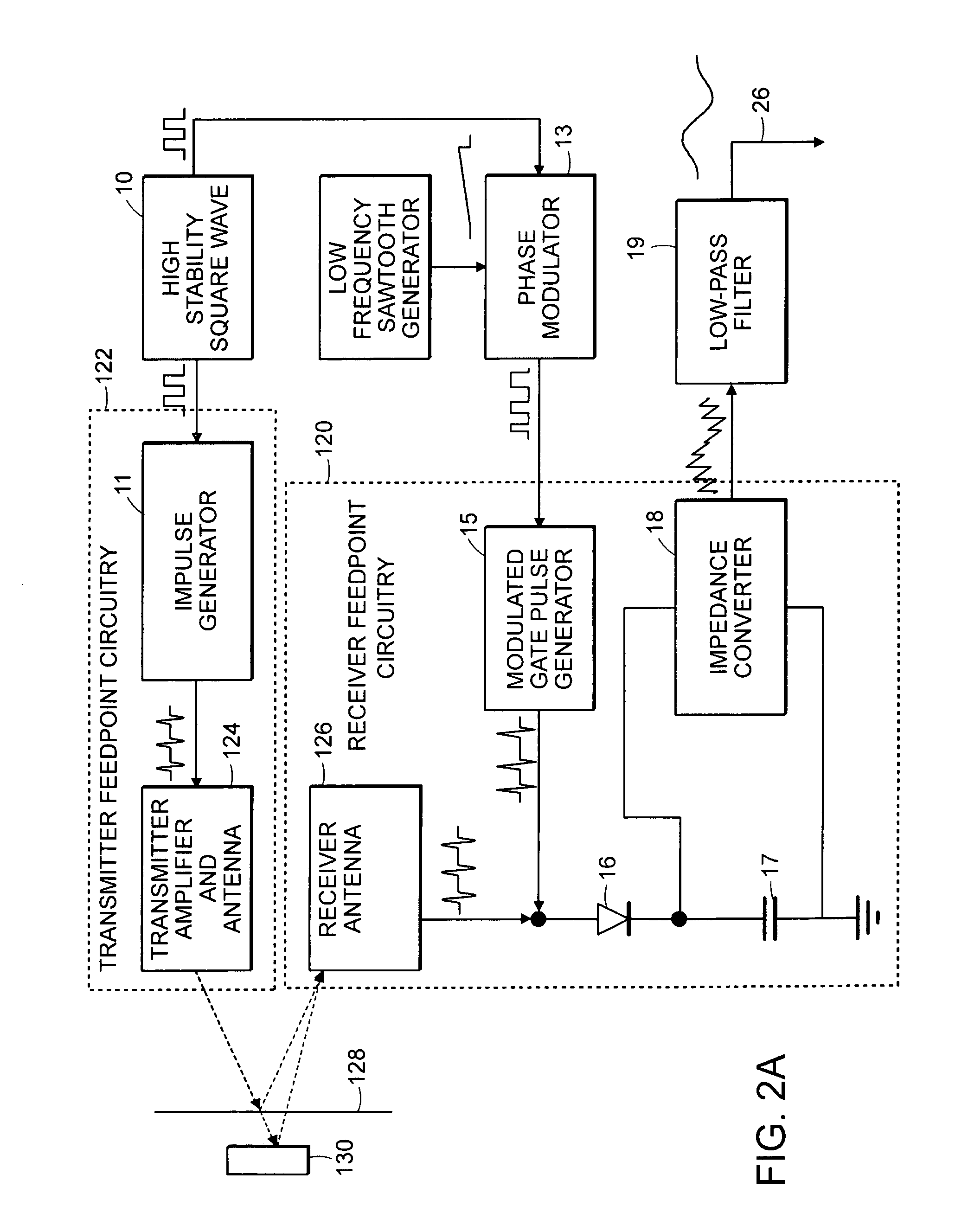Non-intrusive inspection impulse radar antenna
a radar antenna and impulse technology, applied in the direction of electromagnetic wave detection, measurement devices, instruments, etc., can solve the problems of unfavorable reflection between the antenna and the ground or other objects, interference referred to as “clutter”, etc., and achieve the effect of linear increase of resistivity per unit length with distance from the feed
- Summary
- Abstract
- Description
- Claims
- Application Information
AI Technical Summary
Benefits of technology
Problems solved by technology
Method used
Image
Examples
Embodiment Construction
[0022]The problem of multiple reflection clutter-signals, discussed above, is advantageously reduced, in accordance with embodiments of the present invention, by employing antennas having a low radar cross-section, ideally a radar cross section of zero. In accordance with the present invention, a low radar cross section is achieved while retaining an effective search capacity. The antenna's advantages additionally include its cost-effectiveness and its reduced use of materials and production capacity.
[0023]In accordance with embodiments of the present invention, highly resistive, low-metal-content, antenna arms are employed, as now described with reference to FIG. 1. In preferred embodiments of the invention, a resistive tapered-Vee antenna 1, characterized by low metal content, is employed. In preferred embodiments of the invention, the impedance of the antenna is governed by the deposition, typically by sputtering, of a thin film of conductor, such as gold. This process is preferr...
PUM
| Property | Measurement | Unit |
|---|---|---|
| Time | aaaaa | aaaaa |
| Strength | aaaaa | aaaaa |
| Electrical resistivity | aaaaa | aaaaa |
Abstract
Description
Claims
Application Information
 Login to View More
Login to View More - R&D
- Intellectual Property
- Life Sciences
- Materials
- Tech Scout
- Unparalleled Data Quality
- Higher Quality Content
- 60% Fewer Hallucinations
Browse by: Latest US Patents, China's latest patents, Technical Efficacy Thesaurus, Application Domain, Technology Topic, Popular Technical Reports.
© 2025 PatSnap. All rights reserved.Legal|Privacy policy|Modern Slavery Act Transparency Statement|Sitemap|About US| Contact US: help@patsnap.com



